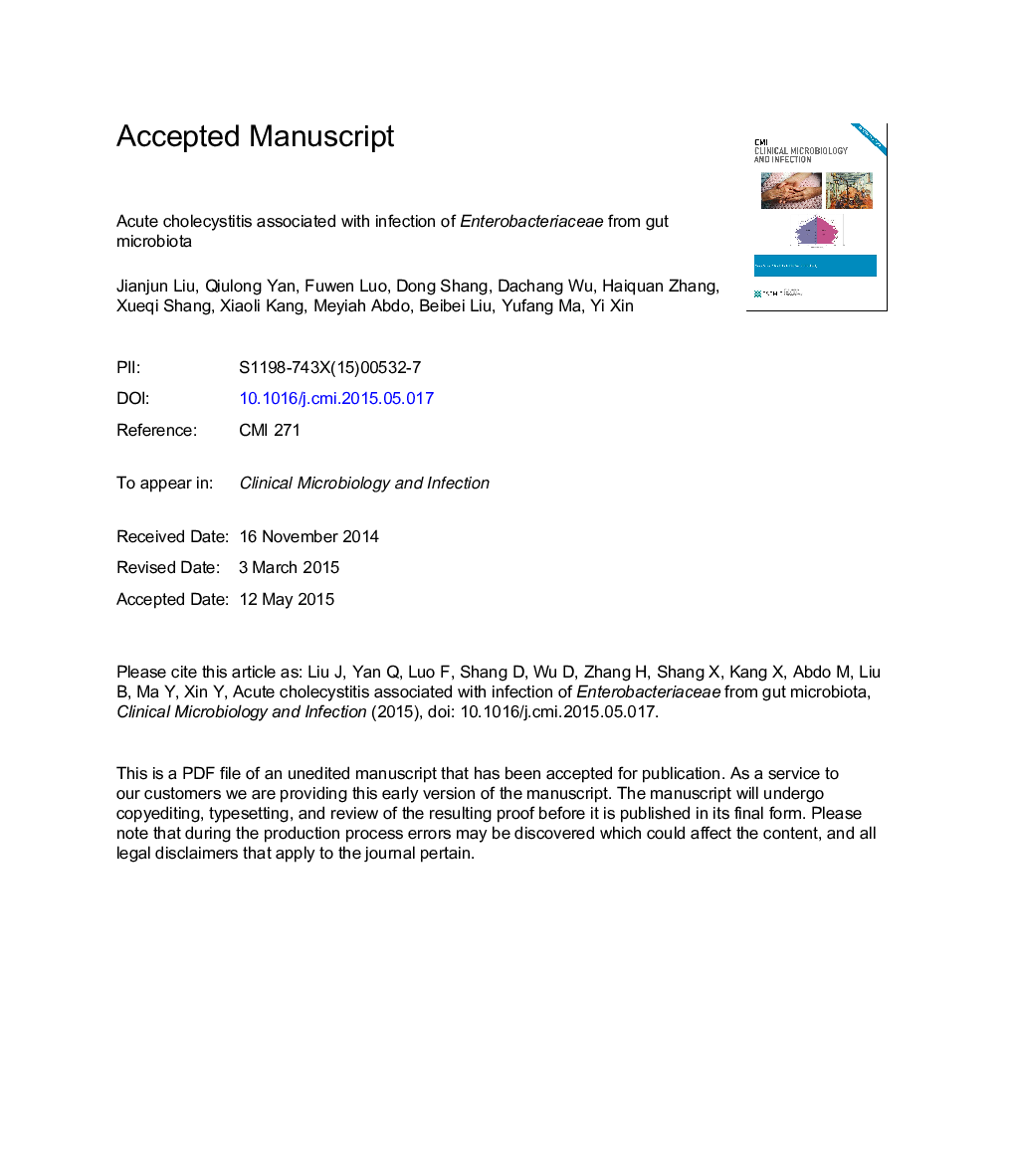| Article ID | Journal | Published Year | Pages | File Type |
|---|---|---|---|---|
| 6129287 | Clinical Microbiology and Infection | 2015 | 31 Pages |
Abstract
Acute cholecystitis (AC) is one of the most common surgical diseases. Bacterial infection accounts for 50% to 85% of the disease's onset. Since there is a close relationship between the biliary system and the gut, the aims of this study were to characterize and determine the influence of gut microbiota on AC, to detect the pathogenic microorganism in the biliary system, and to explore the relationship between the gut and bile microbiota of patients with AC. A total of 185 713 high-quality sequence reads were generated from the faecal samples of 15 patients and 13 healthy controls by 16S rRNA gene pyrosequencing. Patients' samples were significantly enriched in Akkermansia, Enterobacter and Escherichia/Shigella group. The healthy controls, however, showed significant enrichment of Clostridiales, Coprococcus, Coprobacillaceae, Paraprevotella, Turicibacter and TM7-3 in their faecal samples. Escherichia coli was the main biliary pathogenic microorganism, among others such as Klebsiella spp., Clostridium perfringens, Citrobacter freundii and Enterobacter cloacae in the bile of the patients. Additionally, the amount of bile endotoxin significantly correlated with the number of Enterobacteriaceae, especially E. coli. Our data indicate that Enterobacteriaceae might play essential role in the pathogenesis and/or progress of AC. This was verified in an in vivo model using a pathogenic E. coli isolated from one of the patients in guinea pigs and observed marked gallbladder inflammation and morphologic changes. This study thus provides insight which could be useful for the prevention, diagnosis and treatment of AC and related diseases by controlling the growth of Enterobacteriaceae to alleviate the infection.
Related Topics
Life Sciences
Immunology and Microbiology
Microbiology
Authors
J. Liu, Q. Yan, F. Luo, D. Shang, D. Wu, H. Zhang, X. Shang, X. Kang, M. Abdo, B. Liu, Y. Ma, Y. Xin,
